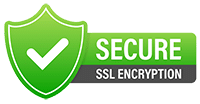Finding the Ideal Time for Office Hours
Setting up office hours can be a crucial aspect of managing your time and availability as a professional. Whether you’re a teacher, consultant, or business owner, determining the best time for office hours can greatly impact your productivity and accessibility to clients or colleagues. Let’s explore some factors to consider when choosing the optimal time for office hours.
Understanding Your Target Audience
The first step in determining the best time for office hours is to understand your target audience’s schedule and preferences. Consider the demographics and lifestyle of your clients or colleagues. Are they working professionals with 9-to-5 jobs, students with varying class schedules, or international clients in different time zones? By identifying the peak times when your audience is most likely to seek your services or assistance, you can align your office hours to accommodate their needs effectively.
Moreover, conduct surveys or polls to gather direct feedback from your audience about their preferred availability and communication times. This data-driven approach can provide valuable insights into their scheduling preferences and help you tailor your office hours accordingly.
Analyzing Your Own Schedule and Productivity Patterns
Another crucial factor to consider is your own schedule and productivity patterns. Reflect on your peak hours of focus and energy throughout the day. Are you a morning person who prefers to tackle tasks early in the day, or do you thrive in the afternoon or evening? By scheduling your office hours during times when you’re most alert and productive, you can ensure that you’re able to provide optimal support and assistance to your clients or colleagues.
Additionally, track your daily activities and productivity levels over a period of time to identify patterns and trends in your workflow. This self-awareness can help you pinpoint the times of day when you’re most productive and effective, guiding your decision-making process when scheduling office hours.
Balancing Availability and Personal Time
While it’s essential to be available to your clients or colleagues during office hours, it’s equally important to maintain a healthy work-life balance. Avoid overcommitting yourself by scheduling office hours during every available hour of the day. Instead, set realistic boundaries and allocate specific blocks of time for office hours, allowing for dedicated periods of availability while also preserving time for personal activities, relaxation, and self-care.
Furthermore, communicate your office hours clearly to clients or colleagues and establish expectations regarding response times outside of these hours. Setting boundaries and managing expectations upfront can help prevent burnout and ensure that you’re able to maintain a sustainable work-life balance.
Considering Peak Activity Times and Trends
Take into account peak activity times and trends within your industry or profession. Are there specific days of the week or times of the month when client inquiries or project requests tend to peak? By analyzing historical data or observing patterns in client engagement, you can identify opportune times to schedule your office hours for maximum impact and accessibility.
Additionally, monitor industry news and developments to stay informed about upcoming events or trends that may impact client behavior or demand for your services. By staying proactive and adaptive, you can adjust your office hours accordingly to capitalize on emerging opportunities or address anticipated fluctuations in workload.
Assessing Communication Preferences
Consider the preferred communication channels of your clients or colleagues when scheduling office hours. Do they prefer phone calls, emails, video conferences, or in-person meetings? Tailor your office hours to accommodate their communication preferences, ensuring that you’re available through the channels they’re most comfortable using. Additionally, be responsive and prompt in your communication during office hours to provide timely assistance and support.
Moreover, offer multiple communication channels to accommodate diverse preferences and accessibility needs. For example, provide alternative methods of contact such as instant messaging platforms or social media channels for clients or colleagues who prefer asynchronous communication or prefer not to use traditional email or phone channels.
Flexibility Trumps Fixed Office Hours
While setting fixed office hours can provide structure and predictability, embracing flexibility may be more beneficial in certain scenarios. In today’s fast-paced and interconnected world, clients and colleagues may appreciate the flexibility to schedule appointments or meetings at their convenience, rather than being limited to predefined office hours. By offering flexible scheduling options, you demonstrate a commitment to accommodating diverse needs and preferences, ultimately enhancing client satisfaction and collaboration.
However, it’s important to establish clear guidelines and expectations around flexible scheduling to ensure accountability and maintain productivity. Implement tools or systems for scheduling appointments or meetings, such as online booking platforms or shared calendars, to streamline the process and avoid conflicts or misunderstandings.
Summary
Determining the best time for office hours requires careful consideration of factors such as your target audience’s schedule, your own productivity patterns, work-life balance, industry trends, communication preferences, and the benefits of flexibility. By aligning your office hours with the needs and preferences of your clients or colleagues, you can enhance accessibility, productivity, and satisfaction for all parties involved. Experiment with different scheduling approaches to find the optimal balance between availability and personal time, ultimately maximizing your effectiveness as a professional.














